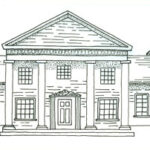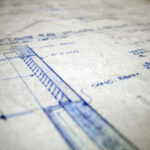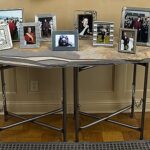Based on earlier homes in Mexico and other areas settled by the Spanish, this style enjoyed huge popularity in the United States from about 1915 until 1931.
These homes were usually one story, with low-pitched clay-tile roofs, stucco walls, hand-forged iron gates and hardware, a long porch (called a portal) and often a courtyard or walled garden featuring a fountain.
The look was intentionally exotic; instead of constructing these homes in the midst of ones with more standard architecture, builders often created entire Spanish-style neighborhoods.
Walls & Ceilings. The most predominant material for both interior and exterior walls is stucco, which usually has a smooth finish to simulate traditional adobe made from clay. Paint it a neutral color such as tan or beige or go for a brighter look with sun-kissed yellows and oranges, terra cotta, or even cerulean blue.
On the ceiling, install beams, using well-worn timbers or faux beams of dark-stained wood. Often each end of the beam rests on a decorative corbel. In New Mexico and elsewhere, ceilings feature vigas, natural spruce or Ponderosa pine logs stripped of bark and laid in the ceiling with plaster between them. Sometimes these are braced with latillas, smaller limbs that fit between the logs, often at 45-degree parallel angles, alternating in rows for a herringbone effect.
Floors. Use tile or brick flooring, but select a slightly irregular type that looks hand-made. Pinkish-orange Sautillo tile, which comes in a number of different shapes, is one traditional style. Other floors might be broad pine planks, or tile in the center with wood around the edges (or the reverse). Thickly woven Navaho-style rugs or other hand-loomed rugs in bright colors or stripes complete the effect.
Surfaces. Use columns to support porches or interior balconies; wooden posts (essentially vertical vigas) or spiral-turned stone columns (in high-end homes) are traditional. Include some intricate hand-painted Talavera tiles in bright colors as a kitchen backsplash, along the wall as a chair rail, or to face the risers on steps.
Fabrics. Bright or neutral fabrics with a hand-loomed appearance are appropriate for most furniture. Leather is always a good choice too, especially if it’s natural, waxed cowhide. Outside, use canvas awnings to shield the windows from too much direct sunlight.
Furniture. Sturdy wooden pieces in simple, utilitarian shapes are most appropriate, and it’s a good idea to include some ironwork too. Colorful painted cabinets, rustic benches, tables with thick plank tops, upright chairs with carved backs and leather seats are authentic. Look for whimsical details such as zigzag cross bracing, elaborate iron hinges, or carved animal figures.
Accessories. Hand-forged iron light fixtures and hardware, natural plant materials, oversize turned-wood candlesticks with beeswax candles, earthenware pottery in primitive finishes, heavily carved mirrors, folk art carvings, and religious artifacts like Santos or crucifixes are typical. If there’s a recessed niche in a thick wall, display a vase of flowers or make a tiny shrine. Minimize shiny accessories, unless they’re hand-hammered copper or the traditional tinwork of Mexico. Brilliantly colorful folk art paintings add an exuberant touch.
Details. Hang garlands of dried chili peppers in the kitchen, or display a wreath of naturally colorful Indian corn cobs or corn shucks.



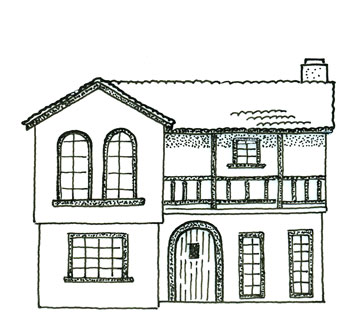
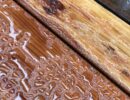

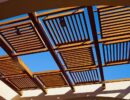
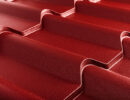
 Don Vandervort writes or edits every article at HomeTips. Don has:
Don Vandervort writes or edits every article at HomeTips. Don has:
